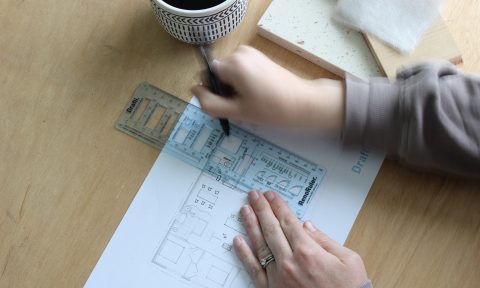In order to maximise property depreciation deductions, it is important to understand the difference between division 40 and division 43 regulations. These two main pieces of legislation affect rates at which assets can be written off and claimed. Knowledge of the difference between division 40 and division 43 assets can assist in ensuring that deductions are maximised. This is particularly important when planning to replace any existing structures or items contained within an investment property.
Division 43
Otherwise known as ‘capital works allowance’ or ‘building write-off’ – division 43 is a deduction available for the structure of the building and the items within it that are deemed irremovable.
Division 43 can be claimed at a rate of 2.5% over 40 years. However, not all properties qualify for this allowance. As a rule, any residential property in which construction commenced prior to 15 September 1987 will not qualify. There are exceptions to this rule when renovating. Any renovations completed after the legislated dates set by the Australian Taxation Office (ATO) may also entitle an investment property owner to deductions, even if the renovations were completed by a previous owner of the property.
Division 40
Also known as ‘plant and equipment’, these are the removable assets found within an investment property. Examples of division 40 items which owners can claim depreciation deductions for include lights, blinds and ceiling fans.
These assets depreciate according to an individual effective life and therefore at a much faster rate than structural items. For example, in residential properties carpet can be claimed at a rate of 20% over 10 years (using the diminishing value method).
Owners of all investment properties, regardless of the property’s age, are eligible to claim deductions for these assets.
Common mistakes investors can make by incorrectly categorising items
It is easy for investors to incorrectly allocate deductions for items by not seeking expert advice. Particular assets can cause great confusion as some assets will qualify in part for division 40 deductions and partly for division 43 deductions. For example an air conditioning unit falls under division 40 whilst the ducting for the same unit falls under the division 43 allowance. Similarly, an in-ground pool falls under the division 43 allowance whilst the pumps for the pool fall under division 40.
In order to ensure your deductions are maximised within the ATO guidelines, it is essential to have a specialist quantity surveyor visit the property and complete a site inspection which lists all assets and outlines the deductions correctly.
What to be aware of when renovating
Understanding the depreciation rates of different items can help owners to make informed decisions when renovating.
Investors can make their choices to install items which will improve deductions and depreciate at a faster rate. For example carpet (division 40) depreciates at a faster rate than tiles (division 43); blinds (division 40) depreciate faster than wooden louvres (division 43) and ornamental lighting (division 40) depreciates faster than down lights (division 43).
The advantage of replacing division 40 assets is that the owner can depreciate these items within a shorter time period depending on the assets individual effective life, potentially resulting in the full depreciable value of the asset being claimed and providing the maximum deductions to the owner within just a few years.
It is also important to be aware that removing assets can affect both division 40 and 43 deductions. Any removed assets could entitle their owner to additional claims. If there is any remaining depreciable value for assets being removed, this residual value can be claimed as a 100% tax deduction in the same financial year as the items disposal.
A depreciation schedule should be arranged both before and after a renovation to capture both existing assets which are planned for removal and any new assets installed by the property owner. A specialist quantity surveyor will complete a depreciation schedule which allows owners to claim the maximum deductions possible.
Case study:
David purchased an existing house one year ago. The property was approximately fifty years old and was acquired as an investment.
After BMT Tax Depreciation conducted a detailed site inspection and noted the eligible plant and equipment, a depreciation schedule was prepared. The schedule identified $15,000 worth of depreciating assets.
Whilst the property was income producing, David claimed a total of $2,700 in deductions in his first financial year.
David decided it was time to build a new investment property on the site. In doing so the existing building was demolished and removed from site. The residual depreciable value of $12,300 became an immediate 100% deduction in the year of demolition.
The following shows some examples of division 40 and division 43 items found inside and outside of a normal home.
Be sure to obtain a tax depreciation schedule from a reputable quantity surveying firm to maximise your depreciation claim. For obligation free advice for any property on the deductions available for both division 40 and division 43 assets, speak with one of the expert staff at BMT Tax Depreciation on 1300 728 726 today.
– Bradley Beer is the managing director of BMT Tax Depreciation. A depreciation expert with over 16 years experience in property depreciation and the construction industry.











